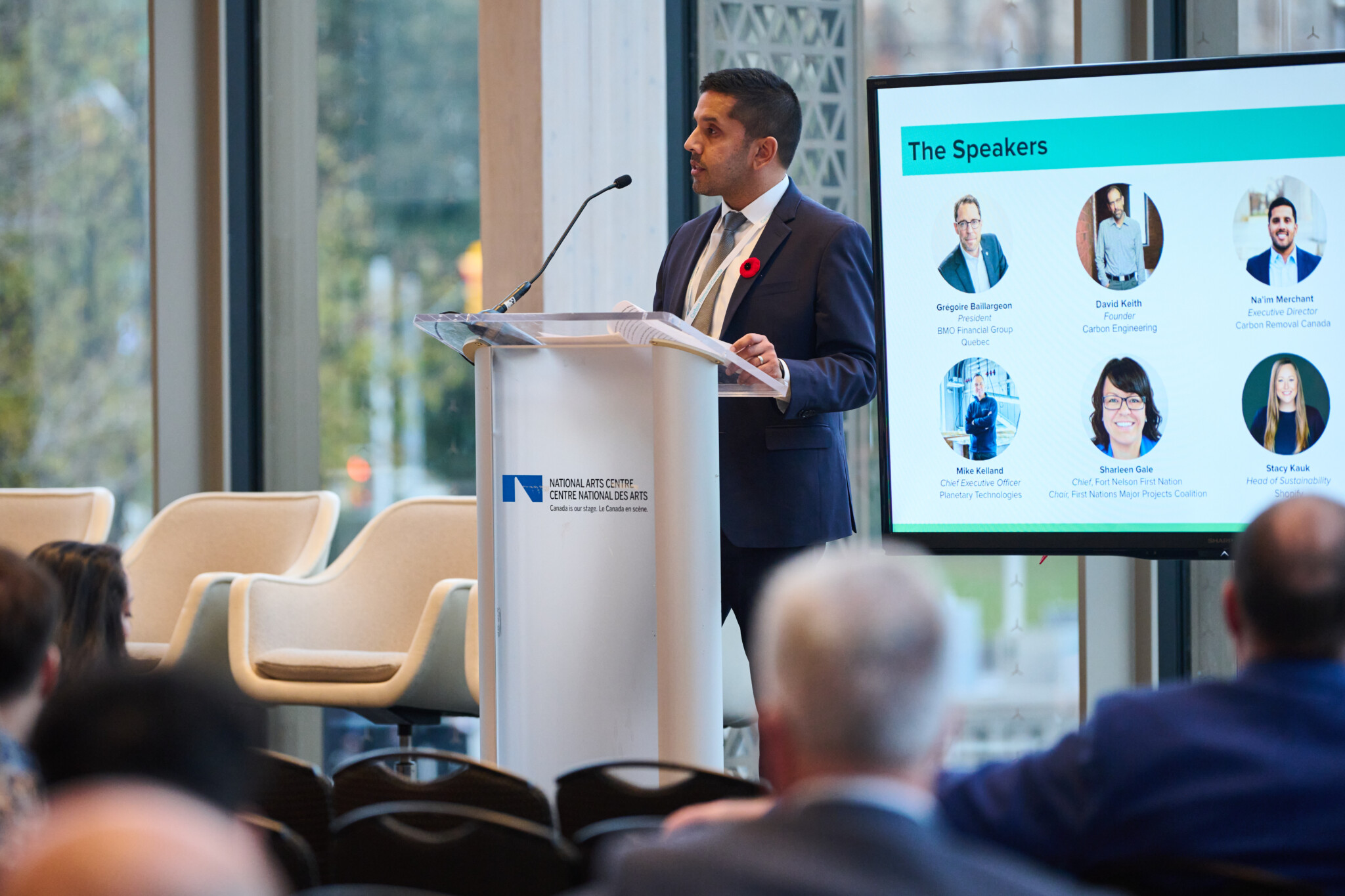
While voluntary carbon markets and policy regulations are rapidly evolving, we need corporations to develop sound, tactical strategies for managing their emissions abatement and removal. In Part 1 of this series, I argued that Scope 1 and 2 carbon offsets should focus exclusively on carbon removal rather than avoidance, even if the supply of permanent carbon removal is not near the scale we need. Here, I will discuss how to fund active carbon sequestration today as well as R&D for these more durable solutions in the future. And I will tackle the thornier question of how to approach Scope 3 emissions.
One caveat that I also mentioned in Part 1: decarbonization of one’s supply chain is the most important step in reducing one’s carbon footprint and mitigating climate change. It is usually cheaper, more efficient, and more just to eliminate a company’s emissions rather than paying to clean up those emissions after the fact. Unfortunately, due to residual hard-to-abate emissions and other hurdles to immediate decarbonization, we will likely need to offset a significant portion of GHG emissions indefinitely. That’s where the need for a firm offsetting strategy comes in.
Bridging the Durability Gap
Durability is one of the most challenging issues weighing on carbon offset frameworks. In other words, how do the climate benefits of carbon storage that might only last decades (or less) compare to storage designed to last thousands of years? Relying too much on the short-term solutions that are widely available today means we are likely just delaying emissions rather than fully offsetting them. At the same time, we obviously can’t wait until more durable storage is available at scale before catalyzing sequestration efforts.
How do the climate benefits of carbon storage that might only last decades (or less) compare to storage designed to last thousands of years?
One way to effectively fund short-term carbon sequestration solutions while also promoting the more permanent carbon removal solutions we need in the future is Carbon Direct’s “Bridging” strategy. This is very similar to the approach Shopify is taking with its Sustainability Fund. Bridging entails purchasing shorter-term, lower-durability credits that are actively sequestering carbon today (e.g., reforestation, etc.), while simultaneously paying the high price on advanced commitments for high-durability solutions (such as direct air capture and corresponding geologic storage). As those short-term credits’ duration runs out, the idea is that higher-durability solutions will be deployed and be effectively sequestering CO2, resulting in a continuous offsetting of emissions.
This strategy achieves the win-win of sequestering emissions today and tomorrow; over time, the more durable carbon offsets will transition from being advanced commitments (ex-ante) to delivered and retired credits (ex-post). As the supply of higher-durability solutions increases and their respective price per ton declines, the portfolio of carbon offset funding should shift to a higher allocation of those respective solutions.
In the immediate future, the portfolio allocation will likely lean toward shorter-term organic storage opportunities. As such, the biological CDR solutions used to offset for Scope 1 and 2 emissions must fit rigorous third-party standards, such as those crafted by Carbon Direct for Microsoft. They should also consider incorporating an expansive version of buffer pools to provide insurance against any reversals (carbon dioxide being released back into the atmosphere due to elements like extreme heat, wildfire, disease, and more).

What to Do About Scope 3 Carbon Offsets
As I argued in Part 1 of this piece, many biological removal credits (such as soil and afforestation) shouldn’t qualify for Scope 1 or 2 carbon offsets because of varying concerns over durability, additionality, and/or shortcomings in monitoring, reporting, and verification (MRV). However, there is an important funding opportunity for nature-based solutions in Scope 3 emissions.
Scope 3 emissions are the indirect upstream and downstream emissions associated with a company’s supply chain. Scope 3 on average accounts for 70% of a company’s total emissions, though it fluctuates across sectors. As an example, a yogurt maker’s Scope 3 would include the emissions of the dairy farmers who provide the milk, the materials companies that create the packaging, the 3rd-party logistics that handle transportation of the ingredients and raw materials to the production facility, and the delivery of the yogurt to the grocery store (plus many other parties in the cradle-to-grave supply chain).
Properly accounting for all those emissions requires the company to ask every party along its supply chain to accurately track and share reports of their emissions. This is why Scope 3 emissions are notoriously difficult for a company to accurately quantify.
The MRV Conundrum
In any carbon offset framework, accurate MRV is critical. Especially so for biological solutions given the concerns outlined above. Unfortunately, perfect accuracy at scale remains difficult to accomplish for many organic carbon credits using today’s variety of methods. How do we ensure that we’re not letting the perfect be the enemy of the good?
Given the 1) accounting difficulties of Scope 3 emissions and 2) their indirect nature, I’d make the case that monitoring, reporting, and verification (MRV) for their corresponding sequestration need not be 100% air-tight (though of course we want it as close as possible).
Insisting on having perfect measurement of the rate of CO2 being stored or re-entering the atmospheric carbon cycle would outright prevent a variety of critical nature-based solutions from being funded. My view is that we should still enable high-quality Scope 3 credits to exist, as a feature on top of — not in place of — emission reductions and decarbonization.
We still need to ensure fundamental criteria and measurement around additionality, transparency, and aligned incentives. This is especially the case for avoided emissions, and is all the more reason we need removal as the foundation of carbon offsets.
I go back and forth on this tradeoff, but despite some shortcomings in MRV technologies today, the additional value in co-benefits from nature-based solutions is overwhelming. Most notably, these include increased biodiversity, food security, job creation, and adaptation. Biological carbon credits are a missing piece to capitalizing key elements of the broader carbon ecosystem in many parts of the world. Nearly 75% of nature-based solutions rely partially on grant funding, and almost half are entirely dependent on it.
Now, I’m definitely not saying all forms of MRV should be accepted for nature-based solutions. We still need to maintain high standards, which many of the current MRV companies that exclusively rely on remote sensing do not satisfy. However, technologies and approaches that emphasize proper accounting baselines, physical sampling, mass data collection, and local/regional variations can lead to more successful verification, and will ultimately help enable more effective Scope 3 crediting. And we’re hopeful that new technological innovations will continue developing to facilitate the right standards on a large level.
Tropical forest communities should be compensated to safeguard peatlands, Amazonian stewards to protect the rainforest, and coastal villages to maintain their mangroves.
Moreover, the most accurate MRV for biological storage today, be it >30cm-1m soil sampling or measuring tree widths, typically requires labor and operating expenses to supplement remote sensing. As such, it can be beneficial for high-quality nature-based credits to represent the true cost of their inception, which, as Ryan Orbuch and Shayle Kahn point out, may include their respective costs of MRV. Even if this price increase prevents some buyers from purchasing, it would help the best biological solution providers stand out amongst a plethora of lower-quality credits, which is important to the buyers out there prioritizing quality over quantity.
Where Avoided Emissions Fit In
Avoided and reduced emissions credits are still difficult to include from an offsetting perspective, although reduction credits are more clearly justified for insetting purposes. As CTVC explains, “insetting refers to the intentional reduction of Scope 3 emissions, the upstream and downstream emissions within a company’s own supply chain. Unlike carbon offsets, inset emissions are directly avoided, reduced, or sequestered within the company’s own value chain — not sold as a credit to offset another company’s emissions.”
Going back to the yogurt example, an inset could occur if the dairy farmers feed their cows red seaweed to reduce emissions, which results in ultimately lower upstream emissions that go into each cup of yogurt — all within the supply chain. On the flip side, should a major oil and gas company based in Europe be able to pay a dairy farmer in the Western Hemisphere to feed her cows seaweed in exchange for the opportunity to say it has offset its emissions? It doesn’t seem justified. Insetting Scope 3 emissions makes much more sense intuitively and given all the reasons above.

However, in addition to a company insetting its Scope 3 emissions, perhaps some universally agreed upon percentage of a company’s Scope 3 credits (say 1-10%) might be permissible for allocation toward avoided nature-based emissions outside of its supply chain, known otherwise as “protection credits.”
I understand full and well there are issues with respective additionality, durability, leakage, and MRV around protection credits. And I’m not advocating for all avoided deforestation projects to be suitable as carbon credits – there are a host of infamous stories that demonstrate the gaping flaws in many of these projects. We absolutely still need to maintain high standards, and if those standards can’t be met, the projects shouldn’t be funded. But again, without the added economic incentive to choose conservation over deforestation, which carbon credits have the potential to create, land clearing and ecosystem destruction is more likely to occur. Tropical forest communities should be compensated to safeguard peatlands, Amazonian stewards to protect the rainforest, and coastal villages to maintain their mangroves.
The Bottom Line
There’s still much to figure out as voluntary carbon markets, CDR solutions, and policy regulations rapidly develop. However, we cannot afford to blindly pump out low-quality carbon offsets for the sake of abiding by ESG claims while continuing to pollute. We must focus our offsetting strategies on a range of effective carbon removal solutions guided by a robust set of principles and criteria defined by experts and third-parties.
Some would say we need to reserve the same levels of MRV accuracy and offset criteria to Scope 3 emissions as we do Scope 1 and 2, to which avoided and reduced emissions of all kinds wouldn’t fit. And perhaps they are correct. However, I believe doing so would prevent the capital flows to nature-based solutions that we truly need. And without the role of carbon markets, we might not achieve the required conservation quickly enough.
More and more people and organizations are building the solutions, standards, and systems we need, which gives me confidence we’re on the right path. I look forward to seeing what’s on the horizon.





